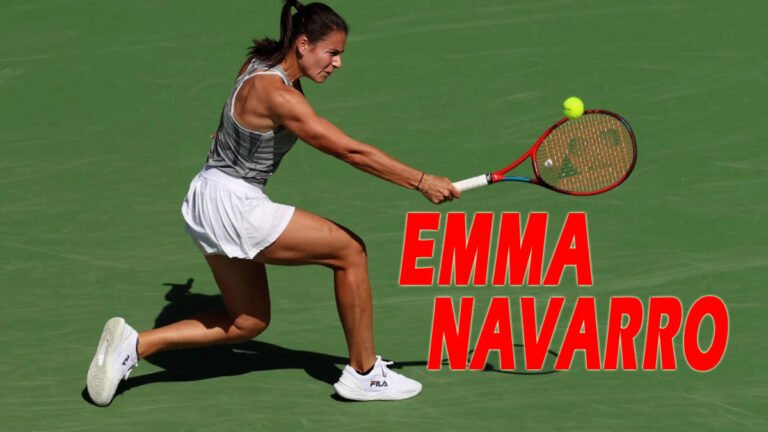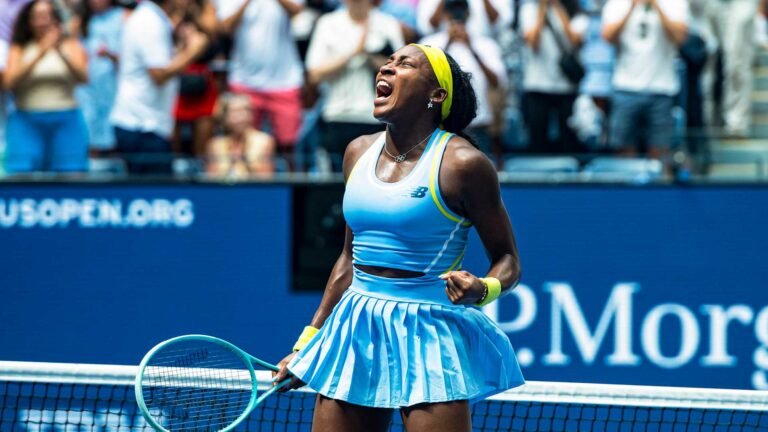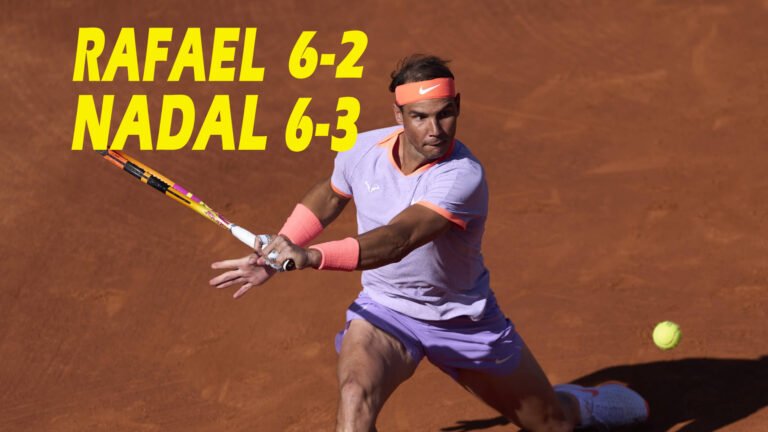Cincinnati Open 2025: Exciting Changes and Upgrades Unveiled
The Cincinnati Open, a cornerstone of U.S. tennis, is gearing up for a remarkable transformation by 2025.
After a $260 million investment from tournament owners Beemok Capital, one of the site’s most important features will be a new two-story player center.
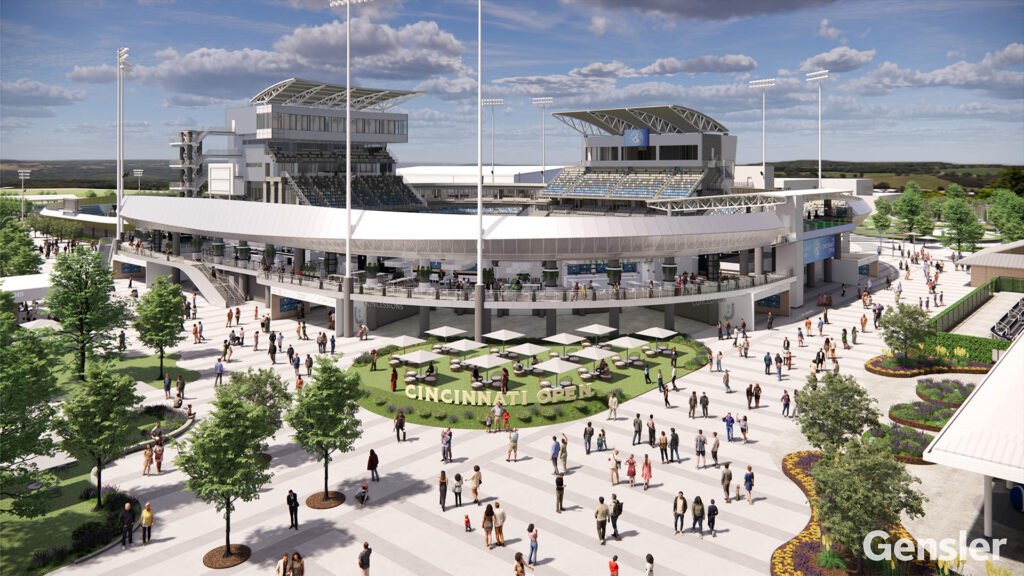
The entire Lindner Family Tennis Center campus is scheduled for a “extensive renovation” before the expanded 2025 tournament, which will include a brand-new sunken stadium court and a two-story player center. The Cincinnati Open will look completely different the following year.
One of the oldest tennis competitions in the United States, the Cincinnati Open was formerly known as the Western & Southern Sponsorship Open. It is a beloved combined ATP and WTA Tour visit that serves as a prelude to the US Open. This year’s event will commemorate its 125th anniversary; however, at this time last year, its future was still uncertain.
The tournament’s owner and CEO, Ben Navarro, obtained the USTA sanction for the event in 2022 and has entertained the idea of relocating it to Charlotte, North Carolina. However, the group announced in October of last year that they will not only continue the event in Mason, Ohio for the next 25 years, but also renovate the site with a huge $260 million makeover.
According to Bob Moran, President of Beemok Sports & Entertainment, “we are ushering in a new era at the Cincinnati Open, and the complete transformation of our campus will create an unparalleled experience for our players and fans.”
“These projects, made possible by partnerships with the City of Mason, Warren County, and the State of Ohio, are the foundation upon which we will build the next chapters of this storied event’s history,” the statement reads. “Our goal is to provide a best-in-class experience to everyone who touches the Cincinnati Open.”
The entire tennis center will be “elegantly reimagined” with new stadium façade, expansive landscaping, and modern amenities to create a “park-like feel” throughout the site, with the goal of enhancing the fan and player experiences.
Also Read: Iga Swiatek’s Dominating Victory over Aryna Sabalenka in Rome 2024
The most striking improvement of all will be the installation of a new sunken stadium court, which will be positioned south of a permanent fan plaza with a large, shaded canopy. When finished, it will have 2,000 seats, making it the fourth largest of the venue’s five permanent stadiums.
Ten more courts are being added to the venue, including the additional stadium, in order to expand the capacity and enable the event’s expansion from a 56-player draw to a 96-player draw over 12 days in 2025. The redesigned ATP Tour schedule includes Cincinnati and Canada (Toronto and Montreal) as additional 1000-level events in addition to Indian Wells, Miami, Madrid, Rome, and Shanghai.
The facility will have 31 courts overall, as opposed to the 21 that were originally scheduled for 2024.
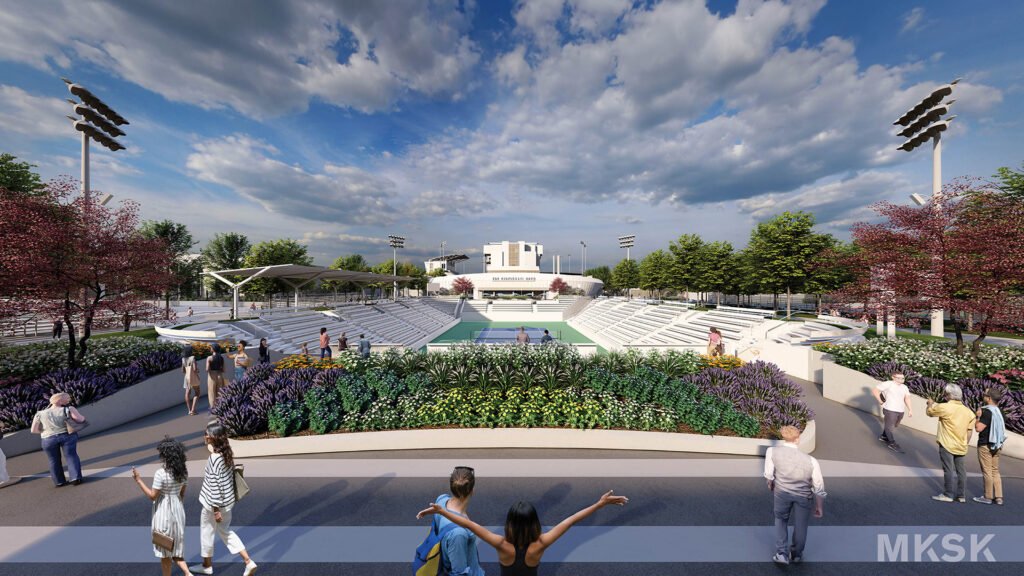
A new, two-story player hub is one of the biggest—and most anticipated—additions to the site for players. The 56,000 square foot complex will have locker rooms for coaches, health and rehabilitation facilities for players, and lounge and dining areas for players and their support staff.
In order to increase the tournament’s fitness center and add more locker room space, the existing player amenities will also be updated.
There are also plans to build two padel courts and six pickleball courts on the premises of the Lindner Family Tennis Center, in addition to a new six-court indoor facility. A brand-new metal panel ribbon facade for Center Court and Grandstand Court will connect the two stadiums at the center of the redesigned site.
“The site improvement plan will include more green space and trees once the grounds are finished,” stated Kristin Byrd, Design Director and Architect at Gensler, a worldwide architectural, design, and planning firm.
The redesigned campus aesthetic, which will elegantly compliment the park-like surroundings, will include clean lines, simple, graceful forms, and a fresh, neutral color palette.
“Our design team honored the tournament’s history through layering art and historical iconography—all with a modern twist—and by incorporating regional building materials and collaborating with local artisans, we were able to create an authentic sense of place.”

